
We are happy to congratulate JBCI’s newest Professional Engineer – Michael Salera, PE!
Mike has been on the JBCI team as an EIT, Engineer in Training, for the past six years. Upon recently passing the Principles and Practice of Engineer exam, he has become a PE in Delaware. This new accomplishment reminds us that the pursuit of knowledge and honorable excellence runs through everything we do at JBCI.
We look forward to a successful future for Mike as a Senior Project Engineer. His willingness to take on challenges for customers will continue to position JBCI as your partner to help defeat complex building challenges.
We wish you great career ahead, Mike!
– The JBCI Team

Whether you are looking for aerial photographs, updated construction surveys, a closer view of facade damage or a forensic determination for safety, a drone is your best bet!
Using Unmanned Aerial Vehicles and Systems (aka UAVs aka Drones) continues to be a hot topic for engineers and designers.
“Drones have become an integral part of our work; allowing us to see more facade and building exterior from the ground. This saves not only money, but time.” says Diane Goschler, EIT, JBCI Sr. Project Manager.
JBCI is utilizing drones for exterior surveys, inspections and forensic engineering projects. This includes areas that are too dangerous for humans or structures where rigging can be difficult or impossible. Two of our engineers, Michael Salera, PE and Tyler Logar, EIT renewed their Remote Pilot Certificate with a Small UAS Rating this summer allowing them to fly small unmanned aircraft. Mike and Tyler surveyed Princeton University’s Carnegie Lake Dam where we carried out a full restoration using our newest drone – a Phantom 4 Pro V2.0. We currently have three licensed pilots on staff.
“It’s exciting to spearhead the use of new technology at our company,” says Mike. “It is an important step for us to add yet another tool to help our clients.”
Mike first brought his interest in drones to a team meeting when staff was asked to suggest technologies for the firm to invest in. Drones were not the only investment JBCI made that came out of that meeting. The staff decided to invest significantly in new printing software and hardware and purchase a fleet of new tablets to make field reporting easier.
“I was only here for a few months and I was supported by the team to go after this certification,” says Tyler. “There were some mentions of drone usage in school but now that I am in the field, I understand why this technology can be extremely helpful in certain situations.”
JBCI plans to support the certification for all members of the engineering department so drones become as incorporated into site visits as our tablets.
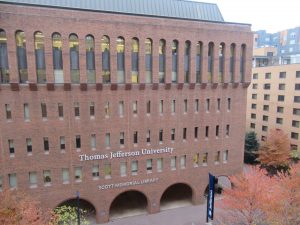 One of the interesting aspects of being a JBCI engineer are the views from our site visits. Below are some recent snaps from our client’s buildings.
One of the interesting aspects of being a JBCI engineer are the views from our site visits. Below are some recent snaps from our client’s buildings.


To view the complete issue click here.

What engineers need to know (but often don’t) about this critical financial tool and how it can help a firm succeed.
By John McCardell
At JBCI, one of our guiding principles is transparency. We embrace sharing relevant financial information through condensed income statements during management team meetings. These statements include key performance indicators that provide a snapshot of the short- and long-term health of the firm.
The income statement – AKA profit and loss or P&L – is one of these useful tools. A better understanding of the income statement is critical when analyzing KPIs because many of them are derived from the information contained within the income statement.
So what does the income statement include? It is simple and made up of three sections:
ONE: Revenue A firm’s revenue is a measure of how much raw income a company is generating from services rendered. In essence, this is the fee that is generated from the skilled and technical work that is produced. As an example, a firm receives a fixed fee contract of $100,000 in January. According to the percentage of completion method, the firm will recognize revenue on the income statement of 30 percent, or $30,000, in January, 50 percent, or $50,000, in February, and the final 20 percent, or $20,000, in March. For the first quarter of the year the revenue will be $100,000. The objective is to match the revenue that was generated to the expense that was incurred to earn that revenue (labor and materials, or direct expense).
Expenses. These are the inputs that are required to generate the revenue. These inputs come in many forms such as labor, insurance, communications, business development, employee benefits, and the list continues. All expenses fall into two categories:
Direct expenses. These are intuitive and tied directly to a project or a cost incurred to generate the revenue of a specified project. An example of a direct expense is direct salaries (billable hours assigned to a project through the timesheet process). Direct expenses can also come in many forms such as mileage reimbursement, printing expenses related to drawings, outsourced skilled services, delivery/courier services, and many others. These types of costs are assigned directly to a specific project number.
TWO: Indirect Expenses Also referred to as overhead, these are the inputs required for the business to operate as a whole but cannot be traced directly to a specified project. Some typical indirect expenses are: insurance, rent/lease, business development, marketing, your favorite financial manager, and various indirect time for business/professional development, sales/proposal preparation, paid time off/holiday, and administrative responsibilities.
THREE: Net income The result of the fiscal period being reviewed is commonly known as “the bottom line.” This is a direct result of the revenues recognized, or fees generated, minus the expenses incurred to generate that fee.
During our management meeting, the team reviews the income statement and begins questioning different items. Being analytically inclined, they crave more information and explanation. Engineers did not become engineers for the joy of reviewing financial statements; however, they do realize it is necessary to understand in order to manage and operate a successful AEC firm.
This is where the controller or CFO can help.
As controller at JBCI, my responsibilities include managing and analyzing the income statement along with the many KPIs to get a pulse of the company.
Essentially, all activity that occurs on a daily basis can be seen on the income statement, since the income statement is the revenue and expenses during the period the financial transactions occurred. The financial data, along with current market assumptions, is used to create financial projections well into the future and enable the firm to establish goals such as new markets, new office locations, promoting key members, as well as onboarding additional resources.
Having a solid understanding of financial statements, particularly the income statement, will enable you to make decisions in the present that set the firm up for growth in the future. The income statement is a direct result of the efforts of the highly skilled work which your firm delivers on a regular basis. Having this understanding can increase company profits, enabling your firm to take on new initiatives and invest in skills development or cutting edge technology. Next time you are presented with an income statement, I hope you feel more equipped with a better understanding of the information.
John McCardell is the controller at Joseph B. Callaghan, Inc. He can be reached at jmccardell@jbciengineers.com.
The Zweig Letter is a truly unique management newsletter for the engineering industry. Each week, The Zweig Letter keeps A/E and environmental services firm leaders informed, inspired, entertained, and challenged. Learn more about Zweig here.
Repointing in process at Princeton University
During a previous site visit, our partner Joseph Dugan, Inc. was in the process of repointing the stone masonry of Witherspoon Hall at Princeton University, a dormitory building built in 1879. Repointing is the process of replacing the external part of mortar joints in masonry construction. Over time, the joints between the masonry deteriorate. This ribbon joint repointing is part of Phase I of a multi-phase full façade rehabilitation project of Witherspoon Hall. We’re always impressed with Dugan’s skill and attention to detail!
One of our engineers was at a job site last week and partnered with DJS Associates, Inc. who brought along one of their team members – a drone.
“Drones have become an integral part of our work; allowing us to see more facade and building exterior from the ground. This saves not only money, but time.” says Diane Goschler, JBCI Project Manager.
Our excitement, knowledge, and investments with drone technology is growing. We’ll keep you posted on our new developments!
Written by Jessica Clifford, PE; JBCI Principal

Our clients come to us for various services and many times in an emergency. The majority of the emergencies we respond to are façade related – a section of masonry fell to the sidewalk below, a precast panel displaced due to failed anchorage, a storm resulted in a significant leak and damage to interior finishes. Each of these problems could have been prevented with regular façade condition surveys and maintenance.
A façade condition survey evaluates most elements of the building envelope including the walls, windows, and roofing terminations. It identifies distress and deficiencies in the façade construction that could lead to the types of emergency situations listed above. The subsequent report describes recommended repairs and maintenance, prioritized based on urgency. An owner can then budget for this work in the future. The goal is to avoid the inevitable, substantial, unexpected expense in response to an emergency event, that could have been prevented for a much lower cost.
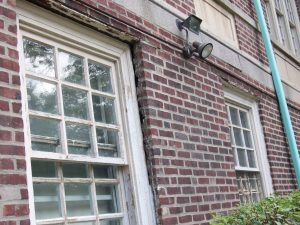
When do you need a façade condition survey?
If you’ve never had one, it’s time! New or old, the exterior envelopes of your buildings are what stands between you and the elements
Newer construction buildings can use façade surveys to identify shorter term maintenance items. Certain sealants only have a usable lifespan of 10 years – the first line of defense against water intrusion – yet most owners we have observed will go more than 20 years before replacing their building’s sealant joints.
Older buildings benefit from façade surveys by identifying distress that occurs after decades of exposure to the elements and the lack of a regular maintenance program. Many older types of construction are no longer used today because of the lessons we have learned about how they perform over time. For example, when the use of structural steel began the industry did not understand that embedding unprotected steel in porous, masonry wall construction would lead to continued exposure of the steel to moisture, causing it to corrode, expand, and displace the masonry around it. Most of the distress we identify in older masonry façades is due to corroded embedded steel, and it usually can’t be seen from the ground.
If you are experiencing water intrusion, it’s time!
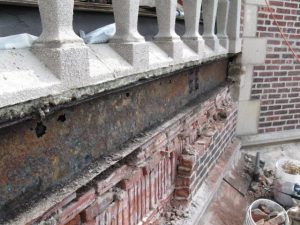
Water damage can wreak havoc on structures. If you are experiencing water intrusion that cannot be identified as a failure of the roof or interior plumbing, it’s time to consider the façade. Sealant joints, flashing transitions, window assemblies, and more, are all points of vulnerability to water intrusion. In addition to the costly damage to interior finishes and potential health concerns, as described above water intrusion can also cause serious problems to the structural support of the façade as well.
If you can see visible distress, it’s time!
We hope that this isn’t the case, but if you see cracking or spalling in any area of your exterior, it is a serious concern and should be evaluated immediately.
Why are façade surveys important?
First and foremost, your façade can be a life safety liability. Façade elements can spall (break off), sections of masonry can displace outward, and veneer anchorages can fail, causing a piece of your building envelope to fall several stories to the ground. This puts the building inhabitants and passersby in danger.
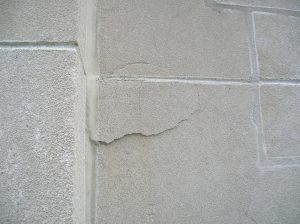
It can cost much more in the long term to not evaluate the façade periodically because you’ll be waiting for an emergency to happen. A reactive maintenance approach can cost upwards of 10x the cost of a proactive maintenance approach with regular surveys and minor repairs done every few years.
The cities of Boston, Chicago, Cincinnati, Columbus, Detroit, Milwaukee, New York, Philadelphia, Pittsburgh, San Francisco and St. Louis have implemented ordinances that require periodic inspections of building façades that meet specific parameters. Though outside these municipalities façade inspections are not a legal requirement, the buildings located outside these cities are no less vulnerable. In fact, liability for non-ordinance areas increases as inspection requirements become more common. Click here for more information on Philadelphia’s façade ordinance.
What are the outcomes of a façade condition survey?
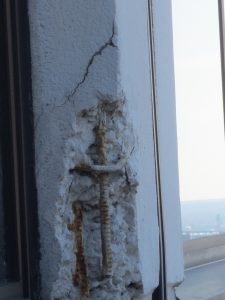
A façade condition survey report should include the following:
- Description of the building and what is known about its construction and previous repair and maintenance history
- List of observed distress and maintenance concerns, and where on the building they occur
- Description of the causes of the distress or maintenance concerns
- Recommended repairs prioritized based on urgency
- Cost estimate for the recommended work
The report ultimately becomes a tool for an owner and association to help manage budget and cash flow over time to avoid special assessments and liability issues that come with emergency repairs. Almost all condominium buildings obtain regular capital reserve studies, but most reserve studies do not include façade maintenance as a budget line item, and it’s even less likely a reserve study will include evaluation of the façade from a vantage point other than the ground or projecting building elements like balconies. Major critical repairs due to neglect can cost in the millions for a high rise residential structure. This knowledge will help your association fully understand the reserves needed to avoid assessments and set monthly dues at an appropriate level.
Every building is different, so the condition survey, and ultimately the report, will be custom to the building. As you know, maintenance is not one-size-fits-all and the only way to prevent disasters is through knowledge. You’ll understand the ins, outs, and quirks of your building that will serve you well in long term decision-making.
If you are unsure about the condition of the exterior of your building, it may be time to call us for an assessment and discuss our other services. To speak with an engineer directly, call Diane Goschler 215.665.0497 x111 or email dgoschler@jbciengineers.com.
About Jessica Clifford, PE
 Jessica began her career at Joseph B. Callaghan, Inc. in 2006. Over the past 14 years she has contributed greatly to the team; specializing in building envelopes, water abatement, building technology and historical preservation. She earned her license and was promoted to Principal. She brings extensive knowledge and professionalism to every client relationship and continues to manage many of the firm’s larger critical projects.
Jessica began her career at Joseph B. Callaghan, Inc. in 2006. Over the past 14 years she has contributed greatly to the team; specializing in building envelopes, water abatement, building technology and historical preservation. She earned her license and was promoted to Principal. She brings extensive knowledge and professionalism to every client relationship and continues to manage many of the firm’s larger critical projects.
Jessica Clifford – jclifford@jbciengineers.com – 215.665.0497
 Joseph B. Callaghan, Inc. welcomes Tyler Logar to the team as our newest Staff Engineer. Tyler joins JBCI after completing a Bachelor of Science in Civil and Environment Engineering at Rowan University. His studies focused on structural engineering, specifically reinforced concrete, steel design, and earth retaining systems analysis and design. During his time at Rowan, he served as captain of the men’s soccer team for three years.
Joseph B. Callaghan, Inc. welcomes Tyler Logar to the team as our newest Staff Engineer. Tyler joins JBCI after completing a Bachelor of Science in Civil and Environment Engineering at Rowan University. His studies focused on structural engineering, specifically reinforced concrete, steel design, and earth retaining systems analysis and design. During his time at Rowan, he served as captain of the men’s soccer team for three years.
Tyler is an all-around Philly sports fan and he enjoys spending time with family and friends to watch the games. GO EAGLES! Camping and traveling both nationally and internationally are also hobbies when he isn’t working. He’s taking suggestions for his next trip.
From all of us at JBCI, welcome to the team Tyler!
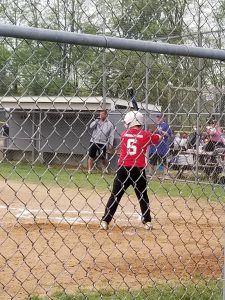 Congratulations to the step son of one of our engineers, Diane Goschler, for raising the most funds for his baseball team’s bat-a-thon! Trevor Goschler, #6 of the Phillies this year, batted a total of 63 points and raised the most money of his team!
Congratulations to the step son of one of our engineers, Diane Goschler, for raising the most funds for his baseball team’s bat-a-thon! Trevor Goschler, #6 of the Phillies this year, batted a total of 63 points and raised the most money of his team!
The Chichester Baseball League raises funds every year to somehow improve the league’s experience. Last year, the funds paid for a pavilion; offering a cool spot for spectators like little brothers and sisters to enjoy the game away from the sun. JBCI was proud to contribute to Trevor’s team and support the families of our staff.
Go Phillies!
Philadelphia-Based Engineering Consulting Firm Ranked #15 for Structural Engineering Best Places to Work Nationwide

Philadelphia, PA, May 23, 2018 – Joseph B. Callaghan, Inc. (JBCI), a consulting engineering firm headquartered in Philadelphia, has been recognized as one of Zweig’s 2018 Best Firm to Work For. This accolade is among the only industry award programs to specifically target engineers, architects, and design professionals.
JBCI, who was recognized on Zweig Group’s 2017 Hot Firms list, ranked 15th in the nation on the structural engineering category. The 2018 Best Firm to Work For list exclusively honors outstanding architecture, landscape architecture, geotechnical, environmental, and civil, structural and multi-discipline engineering firms. The award, which was graded on a combined score of comprehensive employee surveys and corporate evaluations, measures workplace design, teamwork, excellent benefits and amenities, and work culture.
“We’re so pleased to be among the esteemed group of winners this year,” said Allen Roth, PE; President of JBCI. “In our 50 year history, we’ve been through many changes, but our team has consistently put clients at the center of our company. We’re embarking on a new era that incorporates an outstanding work environment for our employees which we believe will truly benefit our clients as well.”
JBCI, along with the other winners, will be celebrated at the Hot Firm and A/E Industry Awards Conference held in Dallas September 20-21, 2018.
About Joseph B. Callaghan, Inc.
Joseph B. Callaghan, Inc., established in 1967, is a structural engineering firm serving corporations, government agencies, institutions, industrial facilities, legal and other design professionals. The firm is committed to providing innovative solutions to clients at every stage of a structure’s life span. www.jbciengineers.com



 One of the interesting aspects of being a JBCI engineer are the views from our site visits. Below are some recent snaps from our client’s buildings.
One of the interesting aspects of being a JBCI engineer are the views from our site visits. Below are some recent snaps from our client’s buildings.







 Jessica began her career at Joseph B. Callaghan, Inc. in 2006. Over the past 14 years she has contributed greatly to the team; specializing in building envelopes, water abatement, building technology and historical preservation. She earned her license and was promoted to Principal. She brings extensive knowledge and professionalism to every client relationship and continues to manage many of the firm’s larger critical projects.
Jessica began her career at Joseph B. Callaghan, Inc. in 2006. Over the past 14 years she has contributed greatly to the team; specializing in building envelopes, water abatement, building technology and historical preservation. She earned her license and was promoted to Principal. She brings extensive knowledge and professionalism to every client relationship and continues to manage many of the firm’s larger critical projects. Joseph B. Callaghan, Inc. welcomes Tyler Logar to the team as our newest Staff Engineer. Tyler joins JBCI after completing a Bachelor of Science in Civil and Environment Engineering at Rowan University. His studies focused on structural engineering, specifically reinforced concrete, steel design, and earth retaining systems analysis and design. During his time at Rowan, he served as captain of the men’s soccer team for three years.
Joseph B. Callaghan, Inc. welcomes Tyler Logar to the team as our newest Staff Engineer. Tyler joins JBCI after completing a Bachelor of Science in Civil and Environment Engineering at Rowan University. His studies focused on structural engineering, specifically reinforced concrete, steel design, and earth retaining systems analysis and design. During his time at Rowan, he served as captain of the men’s soccer team for three years.  Congratulations to the step son of one of our engineers, Diane Goschler, for raising the most funds for his baseball team’s bat-a-thon! Trevor Goschler, #6 of the Phillies this year, batted a total of 63 points and raised the most money of his team!
Congratulations to the step son of one of our engineers, Diane Goschler, for raising the most funds for his baseball team’s bat-a-thon! Trevor Goschler, #6 of the Phillies this year, batted a total of 63 points and raised the most money of his team!